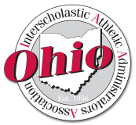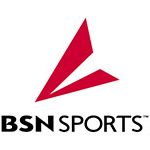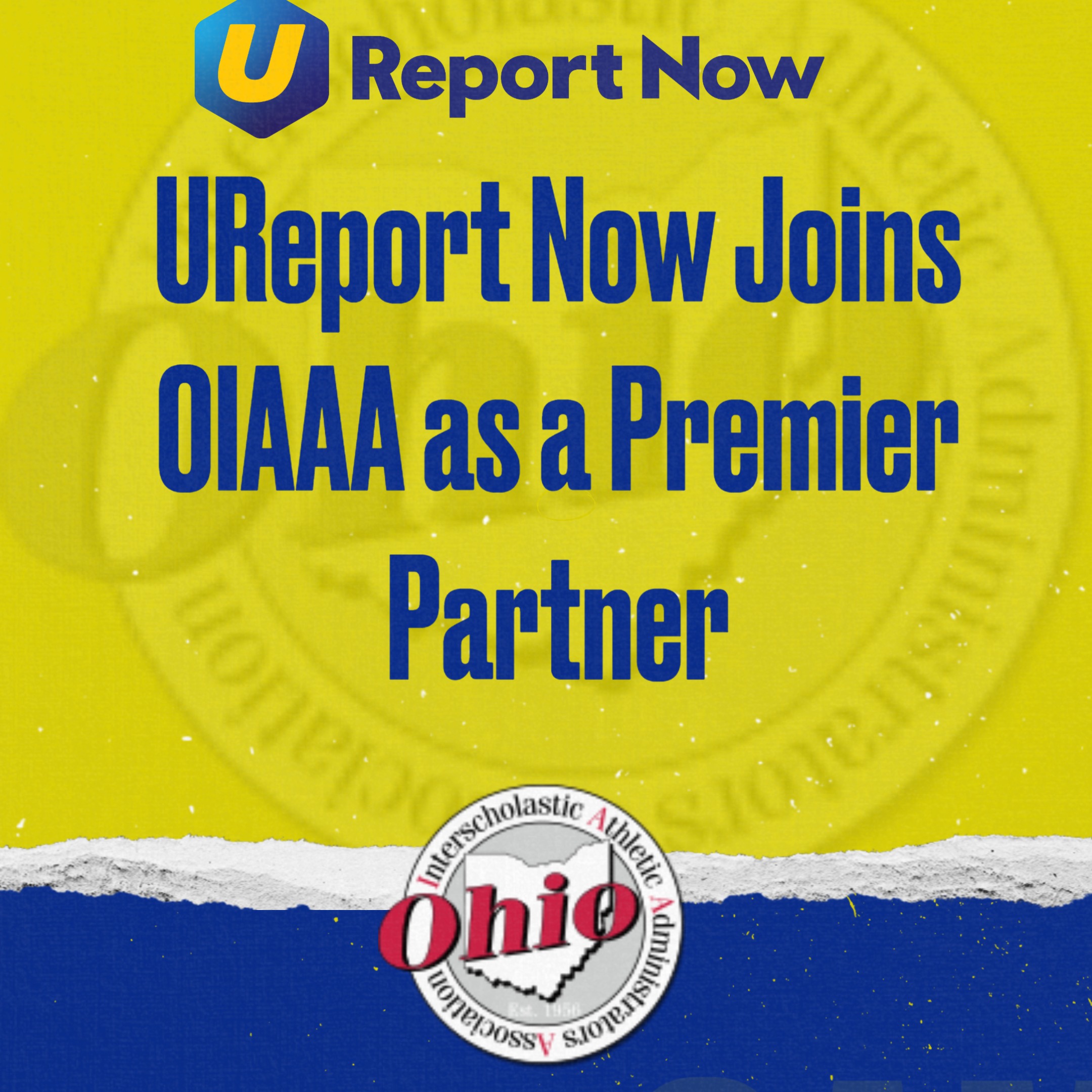OIAAA/OHSAA
“The Bruce Brown Award of Excellence”
2023-2024
Purpose: To recognize on-going and consistent efforts on the part of Ohio interscholastic athletic departments that demonstrate best practice in the endorsement and promotion of education-based athletic programming. Specifically, this award recognizes schools that demonstrate intentional efforts to shift the culture of school-based sport programs as an on-going process.
The name was changed to honor the first Executive Director of the OIAAA, Bruce Brown.
Award Criteria:
- Ohio interscholastic athletic departments may submit their data (as indicated below) at any time of the school year.
- All data submitted must have been deployed, created or accomplished within the past 12-month period at the time of submission.
-
Submissions will be reviewed and approved by the Executive Director and/or the OIAAA Award of Excellence Chair.
- Two LTC Classes are required within a year leading up to the Bruce Brown Award of Excellence.
Criteria Domains:
- Philosophy of Education-based Athletics
- Education Strategies
- Risk Management
- Access/Equity
- Assessment
- Technology/Media
- Sports Medicine
- Innovation/Creativity
- Continuous Improvement
Provisions for submission of evidence:
Philosophy of Education-based Athletics:
- Athletic department philosophy statement which specifically identifies the mission of interscholastic athletic programs as extensions of the curricular/academic program within the school district. Statement should include educational objectives of the athletic department/programs.
- Evidence of Board of Education adoption of athletic department philosophy.
- Evidence of athletic department philosophy posted in/on following:
- Athletic Department handbook – Proof of BOE Approval
- Coach/Athlete/Parent handbook – Proof of BOE Approval
- Athletic department statement on school website
Education Strategies:
- Evidence of the athletic administrator’s personal professional development activities specific to interscholastic athletics within the 12 months prior to submission for the Award. Examples would include, but not limited to:
- Attendance at the OIAAA State Conference
- Completion of at least two Leadership Training Courses (LTC)
- Acquiring one or more of the following designations:
- RAA (through NIAAA)
- RMSAA (through NIAAA)
- CAA (through NIAAA)
- CMAA (through NIAAA)
- AIC (through NFHS)
- CIC (through NFHS)
- Earning a Master’s degree in Education or Athletic Administration
- Evidence (copies of agendas) of meetings and in-house sessions for purposes of training, educating, updating in-house coaching of athletic staff members. Examples might include regular coaches’ meetings (pre- and in-season), in-services specific to interscholastic athletic topics, mentoring, strategic planning, etc.
- Evidence of support and promotion of coach education beyond sport-specific (offensive/defensive strategies) training. Examples of such tactics could include in-house seminars on media/public relations, promotion of Accredited Interscholastic Coach certification (NFHS online courses), etc.
- Provide a brief (one page or less) overview of the process for mentoring new coaches currently within the athletic department.
- The applicant school’s athletic administrator must be a member of the Ohio Interscholastic Athletic Administrators Association (OIAAA) for the school year of award submission.
Risk Management:
- Provide evidence of cautionary statement provisions shared with parents and students (per sport)- Click HERE for example of a Cautionary Statement
-
Emergency Action Plan. Including all site-specific sport venues.
- Describe protocols currently in place to assess atmospheric (heat, humidity) and severe weather (lightening) emergencies for athletic teams. —- Fourteen Legal Duties Facilities and Inspection Report
Access/Equity:
- Evidence of assessment plan for athletic department and programs relative to accessibility and equity parameters. Some examples of evidence may include:
- Facility inventory (listing of boys and girls facilities, age/condition of facilities, fiscal support for upkeep, etc.)
- Line-item budget comparisons (by sport; by gender)
- Title IX surveys and/or studies – BOE Policy — Game and Practice Facilities Schedule (Example)
- Provisions and accommodations for students with disabilities (“How are special needs students engaged within your interscholastic athletic programs?”)
Assessment:
- Description of the process utilized to evaluate and assess coaches within your interscholastic athletic program. More than just the evaluation tool (form), what protocol is utilized to review and target improvement within the coach(es) and the sport-specific program?
Technology/Media:
- Provide five (5) examples the interscholastic athletic department utilizes technology/media in support of education-based athletics. Examples may include, but not limited to:
- Posting and accessibility of team schedules
- Availability of public-access information
- Utilization of “push” data (e.g., parent alerts, text messaging, Twitter/Facebook feeds)
- Local/School/Public media access to interscholastic sport programs and events
- Feedback and survey opportunities for stakeholders and/or community
Sports Medicine:
- Provide evidence of “Emergency Action Plan” protocols that are utilized by interscholastic teams within the school’s athletic department. Click HERE for example of an Emergency Action Plan
- EACH team’s plan should include:
- Facility layout
- Entry and exit routes (particularly for EMS and evacuation routes)
- Location of rescue and first aid equipment
- Location of landline telephones with emergency numbers and personnel posted
- Location of a cell phone and the person responsible for carrying it
- Location of keys that may be necessary for access to phones and equipment
- Location of rescue equipment and first aid kit(s)
- Location of emergency supplies (e.g. flashlights, fire extinguishers, masks, gloves, etc.)
Innovation/Creativity:
- Provide examples and description of non-contest engagement of students and/or adults within the scope of the school’s interscholastic athletic program. Examples of such may be:
- Varsity team members traveling to elementary school to read to students
- Choir students who audition and perform the “National Anthem” at athletic events
- Non-participant student involvement; e.g., student media crew for graphics or video board at game events, student host squad for guest teams or game officials, etc.
- Student-Athlete Advisory Council
- Community stakeholder engagement with planning, advisory or feedback groups related to interscholastic athletics
Continuous Improvement:
- Identify at least one organized event/activity where the educational mission and purpose of interscholastic athletics is clearly and intentionally addressed. Specifically, how is the question of “What is the true purpose of having sports within our schools?” being answered with your stakeholders?
- Provide an example of how the athletic department delivers a continuing message and supports “Respect the Game” and Sportsmanship initiatives within your school and league.
The objective of the “Award of Excellence” is to recognize those Ohio interscholastic athletic departments who are purposefully educating and supporting the mission of education-based athletics in Ohio. Defining success based solely based upon “wins and losses” or the number of championship trophies a school/team possesses misses the mark of what our interscholastic athletic programs should be targeting. The award is designed to honor and celebrate those school athletic departments that are attempting to shift the sport culture toward the genuine purpose of why sports are a part of our school and community culture in America.
As such, the collection and submission of data is meant to be a reflection of what schools are already doing to underscore the mission of education-based athletics. To create a level of consistency and to maintain an appropriate level of professionalism, submission of school data should follow this protocol:
-
- Submission of materials should be inclusive of all data that is to be considered. “Part and parcel” submissions (scattered or segmented submission of data over time) will not be accepted.
- Electronic OR hard-copy data submissions are permissible.
- Submission for the award can be made at any time of the year; once all criteria have been met, corresponding data can be submitted.
- Data submission should be sent electronically to: Randy Tevepaugh, OIAAA at: rtevepaugh@scsrockets.org
Deadline date is Oct 1st
- Two cohorts will be available each year (Jan-April) (May-August)
- Questions regarding the award and data submission can be directed to Randy Tevepaugh per the above e-mail address.
APPENDIX: A—Award Data Submission Cover Sheet
OIAAA/OHSAA
“Award of Excellence”
Submission of Data
Submitting school: ______________________________________
Athletic Director: _______________________________________
Contact e-mail: _________________________________________
Contact phone number: ________________________________
Date of Submission: _______________________________
Type of submission (check one): ______ Hard copy
______ Electronic copy
Please organize your data in the following order and identify each category within your data. Where multiple examples are provided within a category, please title each example for clarity.
- Philosophy of Education-based Athletics
- Education Strategies
- Risk Management
- Access/Equity
- Assessment
- Technology/Media
- Sports Medicine
- Innovation/Creativity
- Continuous Improvement
Submit your data to: (Electronic copy): Randy Tevepaugh rtevepaugh@scsrockets.org
(Hard copy): Randy Tevepaugh, OIAAA
8368 Summit Dr.
Chagrin Falls, Ohio 44023
APPENDIX: B—Example of Sport-specific Cautionary Statement
BASKETBALL CAUTIONARY STATEMENT
Basketball is a highly competitive, fast-action game that places demands on the individual player. For this reason, coaches will implement conditioning regimens that are based on scientific principles, and designed to enhance player endurance, quickness and playing skills. While contact and rough play are prohibited by rule, a certain amount of inadvertent physical contact is predictable. To enhance stability and strength, certain weight room workouts may also be prescribed along with a regular practice activity. In addition, the following considerations and cautions will enhance player enjoyment and safety.
PREPARATION FOR ACTIVITY:
- Wear all pads, braces and supportive undergarments to all practices and competitions.
- Clothing and shoes should fit properly, be comfortable, and allow for maximal physical efforts. Clothing should be kept clean and sanitary.
- Clothing should prevent heat dissipation or restrict movement.
- Players should ingest the equivalent of 4 – 6 glasses of water each day.
- Feet should be covered with a thin cotton sock followed by a heavier wool sock. If blisters are a chronic problem or begin to appear, coaches or trainers should be consulted for appropriate responses or preventive actions.
- Players who require corrected vision must wear shatterproof glasses or lenses. Glasses must be mounted in break resistant frames and be held in place by an elastic strap.
- Players requiring preventive taping, padding, or bracing should arrive early enough to receive treatment and be able to participate in specialty work.
- Remove all jewelry, metal hair clips and hats.
- No horseplay, rough-housing, hazing or initiations.
- Players with seizure, neuromuscular, renal, cardiac, insulin/diabetic, or chronic skeletal problems, disorders or diseases, must present a physician’s approval prior to participation in any practice session.
- High top basketball shoes are suggested, and they should be- properly laced up.
- The use of braces is recommended.
- Mouth guards are highly recommended. IN THE LOCKER ROOM:
- Be alert to slippery floors.
- Be alert to changes in floor texture and elevated thresholds between lockers and shower rooms.
- Keep floors free of litter. Place all personal belongings in assigned lockers.
- Close and lock locker doors when away from your assigned locker.
- Keep soap and shampoo in the shower area.
- Use foot powder in designated areas.
- Refrain from rapid movements, rough-house or horseplay in locker/shower areas.
- Identify incidents of foot or skin infection to coach(es) immediately.
- No hazing or initiations.
TRAVEL TO CONTEST/PRACTICE SITE
- Be alert to ramps leading to practice/contest area.
- Be alert to variations of surfaces of locker room, ramps, stairways, or playing floors.
- Be alert to the following:
- Ball carts.
- Basketballs in flight, rolling, rebounding or bouncing.
- Wind sprints or fast break drills.
- Proximity of bleachers and walls to playing surface.
- Stretch thoroughly and jog easy laps to warm up.
- Do not accept rides home from strangers.
- Be alert for possible hazards when conditioning in the halls.
- Be aware of and avoid contact with bleachers, curtains, and any other miscellaneous peripheral equipment.
- No horseplay. rough housing, hazing or initiations. HAZARDS SPECIF1C TO BASKETBALL:
- Be alert to dehydration symptoms. Dry mouth, inability to cool down, dizziness/lightheaded. Ingest 4-6 glasses of water during the school day and additional amounts at practice.
- Frequent drink breaks will be built into the practice plan and players should make use of each one.
- Foot Problems ·Refer to coach(es) or athletic trainer.
- Blisters.
- Calluses.
- Ingrown toenails.
- Fungus infections or plantar warts.
- Other Skin-Problems ·Refer to coach(es).
- Boils.
- Rashes.
- Floor bums, cuts.
- Ankle and other orthopedic problems.
- Sprains • new – ice, compression, elevation, rest.
- Sprains • old. taping, easy workouts, rehabilitative exercise
- Weight training regimens will have separate standards and progressions designed to enhance safety and physical conditioning.
- Respiratory diseases can be a major problem. A vitamin supplement, fluids, regular rest, proper nutrition and dress contribute to the maintenance of health. Notify coach about use and location of inhalants.
- Check your weight. Sudden or large losses over a month should be brought to the coaches’ attention, especially if you are feeling tired or ill or if you demonstrate cold symptoms and swollen throat or neck glands.
- DO NOT hang on the rims or nets.
- DO NOT engage in rough, thoughtless play.
- DO NOT run under a player who is in the air to shoot or receive a pass. 12. DO NOT swing elbows excessively when clearing a rebound.
- Taller players may need to be alert to their proximity to the lower surface of the backboard.
- DO NOT take an intentional foul that might cause an injury to an opponent.
- When taking a charge or screening an opponent, assume a weight-balanced, protected position.
- lf a backboard shatters, notify the coach and keep people away from the broken glass. BROKEN BACKBOARDS ARE THE FINANCIAL RESPONSIBILITY OF THOSE WHO BREAK THEM!
- Notify the coach or trainer of any injury, no matter how slight it may seem.
- DO NOT share water bottles, towels, or anything else that might transmit body fluids or pathogens.
EMERGENCIES:
Because of the nature of basketball, some injuries will occur. All injuries must be called to a coach’s attention. Most will be minor and can be managed with basic first aid. However, an occasional situation may require more intense management and may also necessitate involvement of squad members as follows:
- Be alert to any injury that the coach may not see. He/she will manage the person in trouble.
DO NOT move the victim! Assist by:
-
- Stop all practices, scrimmages.
- After calling the coach to manage the situation, help with the injured person;
- Telephone for additional assistance (phone numbers and information are posted on the telephone); obtain first aid supplies or equipment.
- Keep onlookers away.
- Sit or kneel in close proximity.
- Direct rescue squad members to the site.
- Fire or Fire Alarm:
- Evacuate and remain 150 feet from the building.
- Be prepared to implement emergency procedures.
- Bomb Threat:
- Evacuate building and remain-200 yards from building.
- Tornado:
- Go to basketball team room, sit on floor next to and facing lockers.
ACKNOWLEDGMENT
We certify that we have read, understand, and agree to adhere to the cautions, considerations and responsibilities required for participation on the xxxxxxxxx High School Basketball Team.
Parent/Guardian Signature Date
APPENDIX: C—Emergency Action Plan sample
ATHLETICS: “EMERGENCY ACTION PLAN”
Team:_______________________________________ Coach:__________________________
Coach’s Cell Phone: ______________________________
- Each coach must complete all requested data within the first two days of official practice start.
- An Emergency Action Plan PRACTICE must be completed within the first week of each practice season (see notes at bottom of this page).
- One copy of this completed page must be on file in the High School athletic office within seven days of the first official start date of practice.
- Additional copies of this data should be provided to each coaching staff member, designated first-aid responder and the athletic trainer.
Practice site and official address: _______________________________
Specific directions to practice/home site from nearest major intersection: _______________________________
Where should EMS come to have quick access to the injured athlete:
__________________________________
Who is to provide primary care to the athlete:_________________
Where is the First-Aid kit located: ______________________________
Where is the AED located from your area: _________________________
Where are the Emergency Medical Information forms: _______________
Who calls EMS: ______________________________________________________
Where is the phone from which to call EMS:________________________
Who notifies the parent(s) that athlete is being transported: ______________
Who notifies the trainer and athletic director: ________________________
Who manages the remainder of contest/practice: ______________________
Who opens doors/gates for EMS: _______________________________
Who travels with injured athlete: _________________________________
Who does follow-up with parent: __________________________________
Who documents the injury: ______________________________
Where is the closest weather shelter: _______________________________
Who has keys/access to weather shelter: _____________________
Who performs daily safety check of field/court area:____________________
Date of “Emergency Action Plan” Practice: ___________________________
Verified by: ______________________________________
Date: __________
APPENDIX: D—“Award of Excellence” Data checklist
OIAAA/OHSAA “AWARD OF EXCELLENCE” CHECKLIST
Order of submitted data
____ “Award of Excellence” cover sheet
____ Athletic Department philosophy statement
____ BOE adoption of Athletic Department philosophy
____ Athletic Department philosophy posting in: Coaches handbook, Athlete/Parent Handbook, online
____ Athletic Administrator’s professional development example
____ Example agenda of in-house coaching staff meeting/training session
____ Example of promotion of coach education
____ Example of Budget process
____ Verification of Athletic Administrator’s membership in OIAAA
____ Example of sport-specific “Cautionary Statement” (identified with school name)
____ Accessibility/Equity example
____ Description of Coach/Program assessment process
____ Five technology/media utilization examples
____ Example of “Emergency Action Plan” (identified by sport-specific and school data)
____ Example of non-contest engagement within interscholastic athletic program
____ Example of promoting educational mission of interscholastic athletics within school/community








